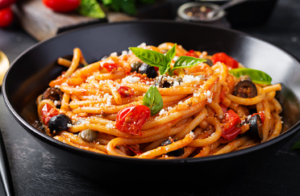Fresh pasta Adelaide is a beloved staple at many Italian restaurants and home kitchens. It should always be enjoyed with light sauces like melted butter or whole milk for maximum flavour.
 Pasta can be made manually (using a rolling pin and knife) and using an automated machine. When making it this way, however, the dough must rest for 30 minutes to allow proper hydration of its components.
Pasta can be made manually (using a rolling pin and knife) and using an automated machine. When making it this way, however, the dough must rest for 30 minutes to allow proper hydration of its components.
How to Make Pasta
Fresh pasta Adelaide can be an amazingly simple treat to create at home. In addition to time and patience, all that’s required for success is a clean work surface (ideally a kitchen table) and enough counter space to spread your dough. If it seems dry, add a few drops of water or olive oil; otherwise, knead until soft and malleable. A food processor or mixer with a dough hook will do fine, but hand-kneaded pasta is far less intimidating!
Shape the pasta into twirls, ribbons or nests and leave to dry slightly before refrigerating or refining until cooking. Most chefs and nonnas rely on this step, which helps the pasta keep its shape and texture without becoming sticky when left to sit dry for too long. You could also store your freshly-crafted pasta until ready to be used – alternatively, refrigerate until ready!
Cooking pasta requires thorough seasoning of its water with salt. Fresh pasta contains more moisture than its dried counterpart, so it requires much less boiling time than dried varieties to achieve the ideal consistency and rehydrate itself into a meal. Many recipes that call for 10-minute boil times for dried types overestimate their effectiveness – just a few minutes in hot, salted water will do just as well!
Ingredients
Pasta can be made using only three ingredients – water, salt and flour. While traditional fresh pasta often included eggs that needed refrigeration for proper storage purposes, dried pasta quickly gained popularity as it could be kept at room temperature longer without refrigeration needs.
Pasta dough can be prepared using all-purpose, “00”, or semolina flours. Higher quality flours result in more flavourful pasta; All-Purpose or “00” Flour has been milled finer than other varieties, making it the ideal choice. Semolina may be suitable for recipes calling for egg in the dough, while higher percentages of all-purpose Flour work best when creating pasta bianca (no egg added).
Combine flour and eggs in a food processor or mixer for large batches of pasta and mix/knead on low speed until the dough becomes smooth. Alternately, you can knead by hand for quicker results; after making sure the dough is even, wrap it in plastic and allow it to rest for 30 minutes before proceeding further with shaping or wrapping into finished shapes.
After your dough has rested, roll it out on a floured surface until it is as thin as desired. Shape your pasta nests or cut individual strands from them before topping them with your sauce of choice and serving immediately. If you want to save any for later, allow nestled noodles to dry entirely before freezing on a baking sheet until hardened before moving them to an airtight resealable bag or container for long-term storage.
Storage
Fresh pasta Adelaide has a shorter shelf life than dried, making proper storage techniques essential to its quality and texture and minimising spoilage and bacteria growth.
When it comes to pasta storage, keeping it dry is vital for maintaining its flavour and texture. An airtight container or bag is best to protect against excessive heat or humidity, which could result in spoilage or mould growth.
Allowing pasta to cool completely before storing is another effective way of keeping it dry, which may take several hours or even overnight, depending on its temperature and humidity levels in your kitchen. If time or humidity are limited, speeding up this process with fan airflow may speed it along faster.
Cooking
Fresh pasta must be consumed within hours or spoil in the fridge. It can be rolled into long noodles or cut into stuffed pasta shapes like manicotti and ravioli for easy cooking. Fresh pasta does not require preservatives like dried counterparts to prevent spoilage; its smoother surface makes it better suited for delicate sauces than its heartier texture counterpart.
Mix the six quarts of water to a rolling boil with one tablespoon of salt per pound of pasta before slowly adding your noodles and carefully stirring to separate their strands. Boil until your pasta reaches an al dente texture that you find pleasing, tasting as you go to check doneness; typically, this should take only minutes, depending on its shape.

Leave a Reply